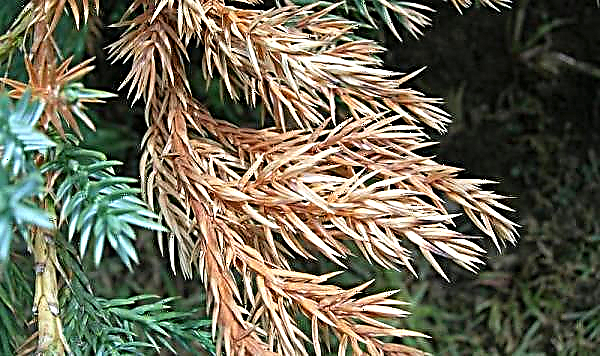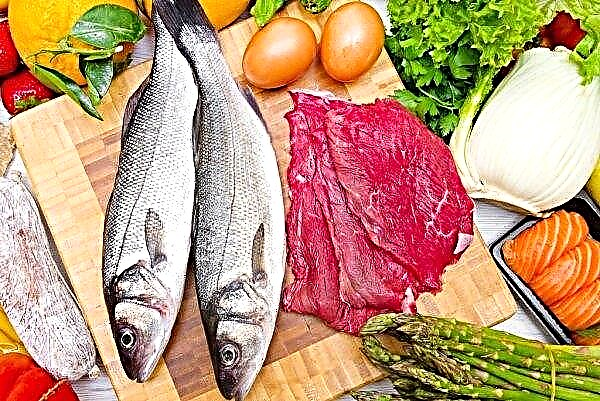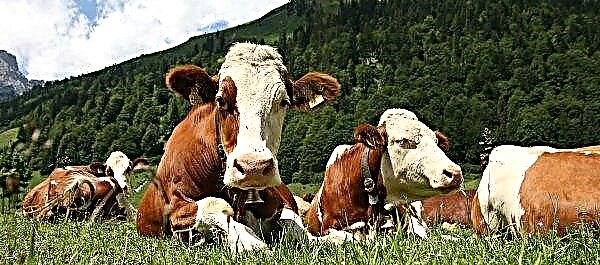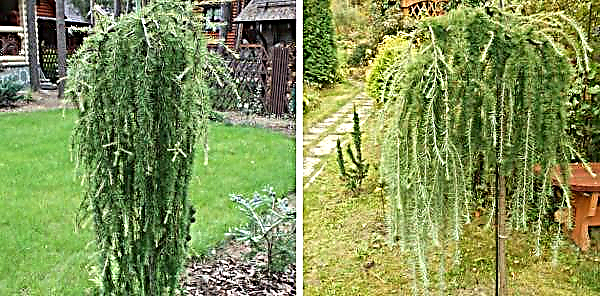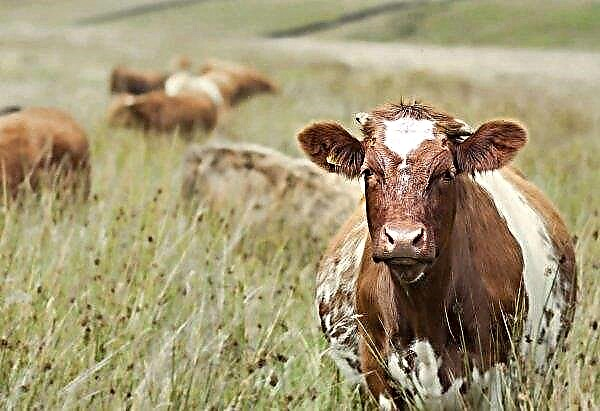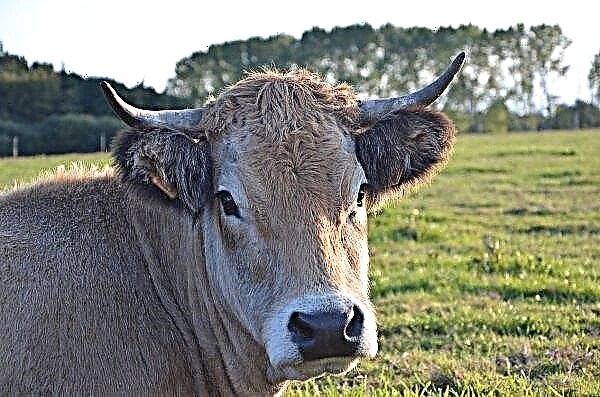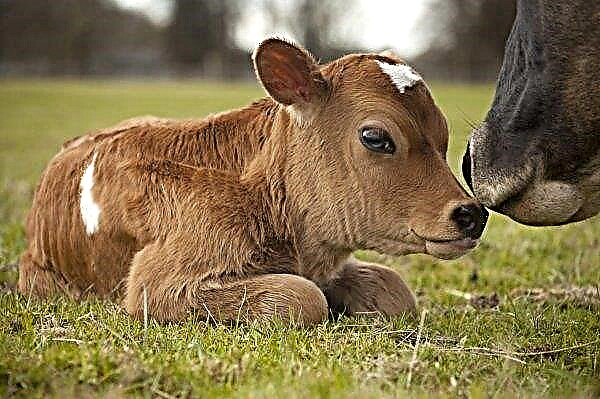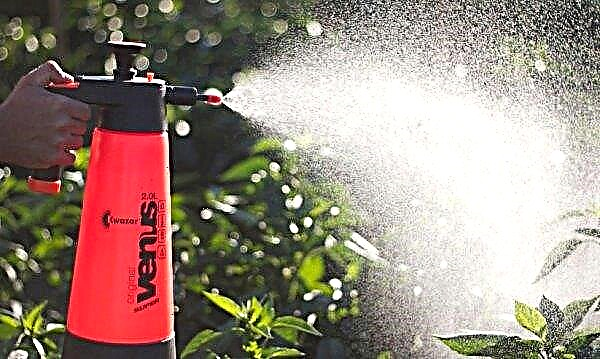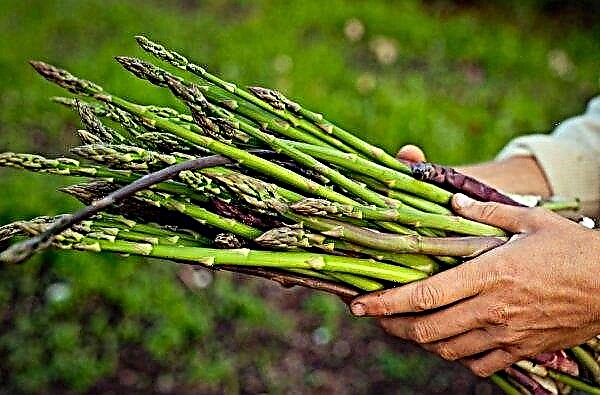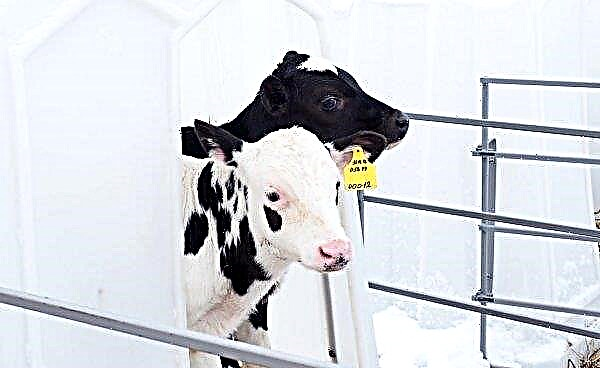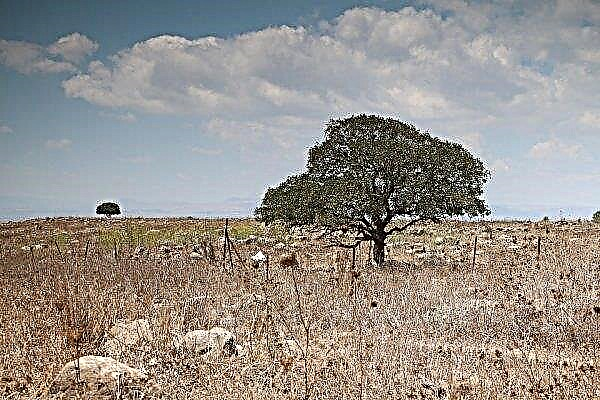In the warm season to grow green onions in the garden is not difficult. With the onset of cold weather, you can successfully cultivate culture on the windowsill of the window, in the garage, greenhouse, cellar. An alternative to growing green products in the autumn-winter period, as well as throughout the year, is the onion in the basement. Let us consider in more detail the nuances and features of the technology of this method.
Varieties of onions suitable for growing in the basement
To get good, healthy products, you need to choose the right planting material. Use onion varieties that have several rudiments (multi-germ):
- Arzamas;
- Strigunovsky;
- Rostov
- Black Prince;
- Bessonovsky;
- Danilovsky.

Bulbs containing only one germ of growth are unsuitable for forcing - obtaining a green feather from this variety is minimal. To make sure the right choice of planting material, you need to cut horizontally one sample.
If there are 2-3 or more points of feather growth in it, then the choice of seedlings was made successfully - the yield of green products will be promising. It is these types of onions that give a large number of sprouts, strong and dense greens, will please a plentiful harvest when grown in the basement.
Did you know? People growing green onions in greenhouses or other enclosed spaces are almost not susceptible to colds and viral infections.
Growing a green onion feather for personal use or for sale does not require special expenses and efforts. But still you need to know the main aspects that guide the cultivation of this vegetable. This will help not only save time spent, but also get the desired crop.
What is needed for growing onions in the basement?
Before embarking on a plan, you need to decide on the choice of substrate for distillation, because you can grow onions in the basement using different technologies:
- Hydroponics. This method involves cultivating onions without soil, but only with the help of nutrient solutions. A great advantage of the technology is the receipt of high-quality green products in a short time. But there is a negative side: the high cost of special equipment (aerator, etc.).
Video: Growing green onions in hydroponics
- The use of sawdust for distilling onions. A fairly simple way, but this material in its composition does not have nutrients. A significant drawback of this option is the one-time use of the specified funds.
Video: Growing green onions in sawdust
- Soil use. If the onion plant is unpretentious to the conditions of cultivation, this method is most often preferred. A set of nutrients contained in the soil, completely contributes to the full development of the plant. It is only necessary to correctly determine the choice of substrate composition.
Video: Growing green onions in the soil mixture
For comfortable growth of plantings in the basement, without fail, you must adhere to the following rules:
- providing enough complete lighting for plants;
- compliance with the appropriate temperature regime;
- regular irrigation and top dressing of onions;
- use of ventilation in vegetable locations;
- the presence (installation) of shelving;
- the room should be dry, clean, disinfected, without mold and mildew.
Onion rack
The installation of a multi-tier frame with boardwalks with a small basement area will save space, compactly place planting material and facilitate the work performed. These designs can be purchased ready-made or made by yourself. Most often, wood is used for this. For long-term use, metal structures from pipes and profiles are used (in this case, more cash investments are required).
Metal structures are light weight and high strength. Protecting them from corrosion, it is necessary to color the product. To illuminate the plantings of cultivated plants, fixtures are attached to the racks. When building racks, the dimensions of the room and the scale of future plantings of the vegetable are taken into account.

It is necessary to highlight the main recommendations for the manufacture of this structure:
- the passage between the racks should be at least 1 m;
- the width of the structure with one-sided service 0.5–1 m, two-sided - 1-2 m;
- the length of the structure is arbitrary (depending on the size of the room and assigned tasks);
- distance between tiers - 50–65 cm;
- the elevation of the lateral sides of the tier - 8-10 cm;
- product height - 1.5–1.6 m (for comfortable work without using step-ladders).
Did you know? Green onions increase appetite, strengthens tooth enamel, has an antimicrobial effect, improves immunity and elasticity of the walls of blood vessels.
The use of tiered sides allows you to use the tier as a ready-made box. A polyethylene film is placed on each tier with an inversion over the edge of the side, soil is poured on it for further cultivation of products. Often they make the construction of shelves without the use of sides, using ordinary wooden boxes or other containers for forcing the onions. Filling with soil, they are tightly installed on tiers.

Bow
It is important to correctly carry out the selection of planting material. The selection of seedlings is carried out very carefully: discarded spoiled and rotten bulbs, leaving the strongest and healthiest samples. Selected specimens should be standardly the same - 3-5 cm in diameter.
Vegetables suitable for planting should be firm and resilient, with shiny scales. Highly effective return of onions to the feather occurs during preparatory procedures preceding planting of plants in the ground.
Preparing the onion for planting
With the help of a few simple, uncomplicated events, the culture is prepared for forcing. The implementation of these works will ensure the emergence of friendly, juicy seedlings at an earlier date:
- Warming the selected bulbs for 2 days at a temperature of +35 ... + 40 ° C.
- Trimming the upper part (neck) of the onion by 0.5-1 cm (for quick awakening of a sleeping growth point).
- Soaking planting material for 2-3 hours in warm water +30 ... + 40 ° C, with the addition of potassium permanganate at a low concentration (disinfection of the vegetable, acceleration of the germination process).
 Onions are ready for further planting in prepared soil or soil substrate
Onions are ready for further planting in prepared soil or soil substrate
Rules for planting onions
To grow green onion feathers use garden soil with the addition of sand and peat or a special substrate. The soil is poured on racks (boxes) with a layer of 3-5 cm. Bulbs are planted in the soil quite tightly, with a distance of 2-3 cm from each other. Planting depth is not great: up to half the height of the bulb. The top of the vegetable must be located above the surface of the soil in order to avoid decay of the crop. After planting, the soil needs to be moistened.
Compliance with optimal, comfortable conditions for cultivating an onion feather is the key to obtaining a generous, high-quality crop. Consider the main criteria for growing onions in the basement, how to grow and collect the abundant gifts of this product.
Video: Planting onions in sand pallets
Features of onion care in the basement
The total growing season of green onions is from 14 to 30 days, depending on the growing conditions. Subject to all cultivation rules, the first sprouts will appear after 4–6 days, the daily growth of which will be 2.5–3 cm. Having reached a height of 30–40 cm, the feathers are cut off. To get the desired result, it is important to create the most favorable environment for the growth of this product.
Temperature and lighting
In order to get green products in a short time, a certain temperature regime must be observed. With a lack of heat, onion distillation will slow down, and harvesting will occur at a later time. It is recommended to adhere to the following temperature indicators:
- the first 5 days - +12 ... + 15 ° С, for the formation of a strong root system;
- the next 2-3 weeks - +20 ... + 25 ° C, (from the appearance of the first sprouts to the collection of the product), for intensive leaf growth.

Using a basement to get greens is a very good option in terms of temperature. In summer, the heat indicators are almost in the optimal range, and in winter it is enough to only additionally heat the room.
The lighting system also plays an important role in the cultivation of this vegetable. In the first week after planting, the plants do not need backlighting. When shoots appear, the illumination in the basement is increased. Daylight hours for onions are 12-15 hours.
Important! It is not recommended to use incandescent lamps for lighting, as they heat the plants, dry the air and do not provide sufficient illumination of the space.
Without the use of illumination, it will not be possible to achieve the necessary rapid growth of the plant. In addition, from a lack of light, the feathers of the plant will be extended, will be brittle and brittle, have a pale green, yellowish color. As additional lighting, use fluorescent lamps or special phytolamps. Light sources are placed above the plants so that the onion shoots stretch upward and not to the side, are straight and strong.
The use of backlighting will fully provide the plants with the correct course of photosynthesis, i.e. building green mass. Lighting efficiency can also be increased by coating surfaces (walls, shelving ceilings, etc.) with reflective material, for example, foil, light glossy paper, white paint or enamel.

Feeding and watering
The first time the soil is fertilized before planting, enriching it with phosphorus and nitrogen. Use fertilizers such as:
- superphosphate - 30 g of the substance is diluted in 10 l of water, evenly irrigate the soil;
- ammonium nitrate - 30 g of the product is applied per 1 m, followed by watering the soil.
The following dressing is carried out 2 weeks after emergence. To obtain an environmentally friendly product, organic matter is used as a fertilizer:
- mullein infusion - 1 kg of concentrated fertilizer is diluted in 30 l of water;
- chicken droppings - 1 kg of the substance is diluted in 150 liters of liquid.
A significant role in obtaining quality products is played by proper irrigation of plants. It is produced with water at room temperature (+20 ... + 25 ° C), always under the root of the plant, avoiding moisture on the leaves. You need to water the onions regularly, but at the same time carefully make sure that stagnation of water does not form on the soil. Excess moisture adversely affects the culture: the bulb rots, the plant dies.
By adjusting the intensity of irrigation, it is possible to ensure uniform soil moisture and prevent it from drying out. Stop wetting the soil about 5 days before cutting. If you continue to water, the pen will become brittle and watery, and its shelf life will be reduced.
It is recommended to pour the growing seedlings with a weak saline solution during the growing season: 300 g of table salt is dissolved in 10 l of water. Salt liquid acts not only as a disinfector: it disinfects bulbs infected with an onion fly, but also stimulates plant growth.
Important! Carrying out watering, it is necessary to avoid hit of water on sections of bulbs (a germ of growth) in order to avoid decay of a plant.
Onions are unpretentious and undemanding when growing, so growing it in the basement in winter is not at all difficult. Fulfilling the necessary recommendations for agricultural farming, taking care and proper care of the plants, you will certainly get a high, excellent crop of your favorite vegetable: juicy, fragrant feathers of green onions.

